AIP, Vegan and Vegetarian options, Paleo, Gluten Free, Dairy Free, No Eggs, No Nuts and No Processed Sugar
Tempura is an ancient Japanese dish most commonly made with seafood or vegetables coated in a light and crispy deep fried batter. Common tempura batter is a simple mixture of flour, egg and water. Changing this healthy tempura batter recipe to AIP (Auto-Immune Protocol) which means it is Gluten Free, Dairy Free and Egg Free, was really tricky and required a lot of trial and error.
As a kid I didn’t like any seafood, I don’t know why my parents ordered fish when we got food from the fish & chip shop, I would always just eat the potato cakes and chips. I only started eating fish when I met my partner and would have a little bit of his fish, but only if it was something like flake with a light taste.
Tempura Origins….
Although tempura is known around the world as a Japanese dish, tempura came to Japan through Portuguese introduction. It started in Nagasaki and then spread to the east of Japan, where it became one of the “three flavours of Edo (Tokyo)” and a speciality of Edo (Tokyo).
The interesting fact is that the original form of tempura was heavily inspired by a Portuguese dish called “Peixinhos da horta” in 16th century.
It might seem random, but Portugal was one of very a few countries that Japan traded with back then and before that point, there was not really a culture of deep frying or cooking things with a batter. There is even a theory that the name “tempura” comes from the Portuguese word “tempero” which means “seasoning”.
In addition to tempura, there are a few other traditional Japanese dishes that were inspired by Portuguese dishes such as castella cake and konpeito candy.
Tempura is different from Panko Japanese breadcrumbs or normal breading batters. Tempura is known for being lighter in texture and is prepared differently. It is prepared with very cold water and should not be over mixed. Other batters are great for fried food but tempura is famous for its light and crispy texture.
Tempura does not use breadcrumbs (panko) in the coating. Deep-fried foods which are coated with breadcrumbs are called furai, Japanese-invented Western-style deep fried foods, such as tonkatsu or ebi furai (fried prawn).
Shrimp, Prawn, and Squid, also called as “ebi” in Japanese, shrimp and prawn are the most common seafood ingredient for tempura. The shrimp is always cooked in a way that keeps its straight form and prevents it from curling up.
Shrimp and prawns tend to be the most popular options, but you’ll also find recipes made from mushrooms, eggplant, and squash, and those recipes taste like each of those, respectively.
Is it Vegan friendly?
Is tempura batter vegan? Traditionally no, tempura batter isn’t suitable for vegans as the batter usually contains eggs. My recipe is perfect for vegan’s as well as I don’t use any eggs.
What sauces to use?
My recipe for Tempura fish doesn’t need any sauces either, it tastes better without any sauce.
How to shallow fry.
Instead of deep frying I use extra virgin olive oil and shallow fry in a roasting pan, it uses less oil and still works fine, it’s just a little harder to cook.
The origin of the name Tempura
The origin of the name “tempura” is believed to stem from the Latin word “tempora”, which refers to times of fasting when the Catholic Church dictated that followers avoid eating meat. During these periods, Portuguese Catholics would batter and fry vegetables instead of poultry or fish.
Adjusting Tempura Batter to Gluten Free, AIP and Egg Free….
This recipe is not a traditional tempura batter but I was able to adjust it to be AIP. It tastes amazing, it is light and fluffy and you wouldn’t even know that it is AIP. I have tried more than 10 times to get a batter that I could eat but they never turned out right. It’s nice to have as a change from fish cooked in the frying pan with just lemon juice.
Facts about Farmed Fish:
Fish now is highly farmed where they feed the fish antibiotics and hormones to make them grow faster and bigger. Farmed salmon have colour added through their feed to make their flesh orange/pink.
Health benefits of eating fish
There are many benefits to eating fish once to twice a week. It’s good for your brain health, stops depression, helps improve sleep, have a lower risk of heart attacks and strokes. Fish is a high-quality protein, iodine, and various vitamins and minerals. like vitamin D.
Low mood, melancholy, decreased energy, and a loss of interest in life and activities are characteristics of depression.
According to studies, habitual fish eaters are far less prone to experience depression (Source).
Omega-3 fatty acids may also greatly boost the efficiency of antidepressant drugs and fight depression, according to numerous controlled trials (Source).
Another illness that fish and omega-3 fatty acids may help is bipolar disorder (Source).
Omega-3 fatty acids, which are essential for healthy body and brain function and are significantly associated with a lower risk of numerous diseases, are another component of fatty fish (Source).
Today’s population, especially children, lacks nutrients because they don’t eat nutritious. In particular, omega-3 fatty acids are crucial for the development of the brain and vision.
Where I source my fish.
The fish I get are from my local butcher who source it from local farms is free from antibiotics and hormones and is fresh because it hasn’t had to travel far. The other place I get my fish from is Wholefoods who get there fish from Queensland and Tasmania that comes straight from the ocean and is vacuum sealed which is organic with no antibiotics or hormones. I buy fish that is fresh which makes a big difference, it doesn’t have a fishy smell. This batter works well on Snapper, Whiting and most fish that don’t have a strong flavour.
Let’s get started so you can try this amazing Tempura Batter…
Combine all ingredients in a deep bowl. Coat the fish and vegetables in tapioca flour before putting the batter on.
Tip: The tempura batter works best with mild flavoured fish. I have tried it with a strong flavoured fish which was too overpowering with the batter.
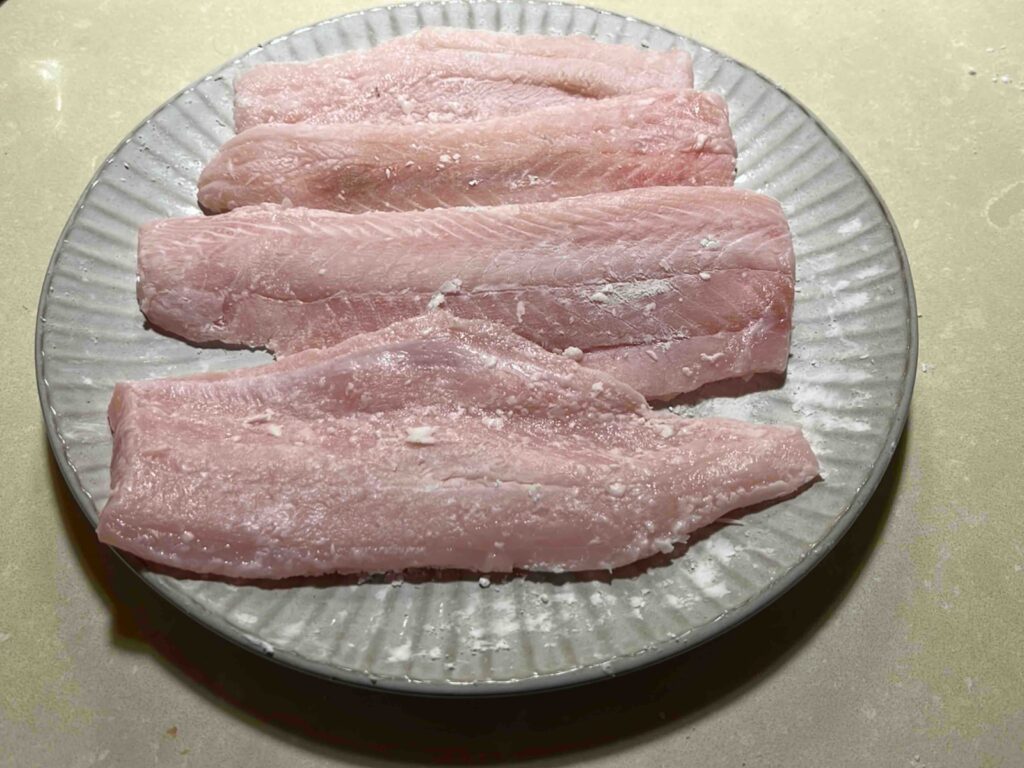
Tip:
If the mixture is too watery you will need to add 1-2 tablespoons of tapioca flour each time until it becomes thicker.
You can use water instead of soda water.
Below is a picture of the batter mixture, it shouldn’t be too thick but also not too watery. It should be like a pancake batter mixture.
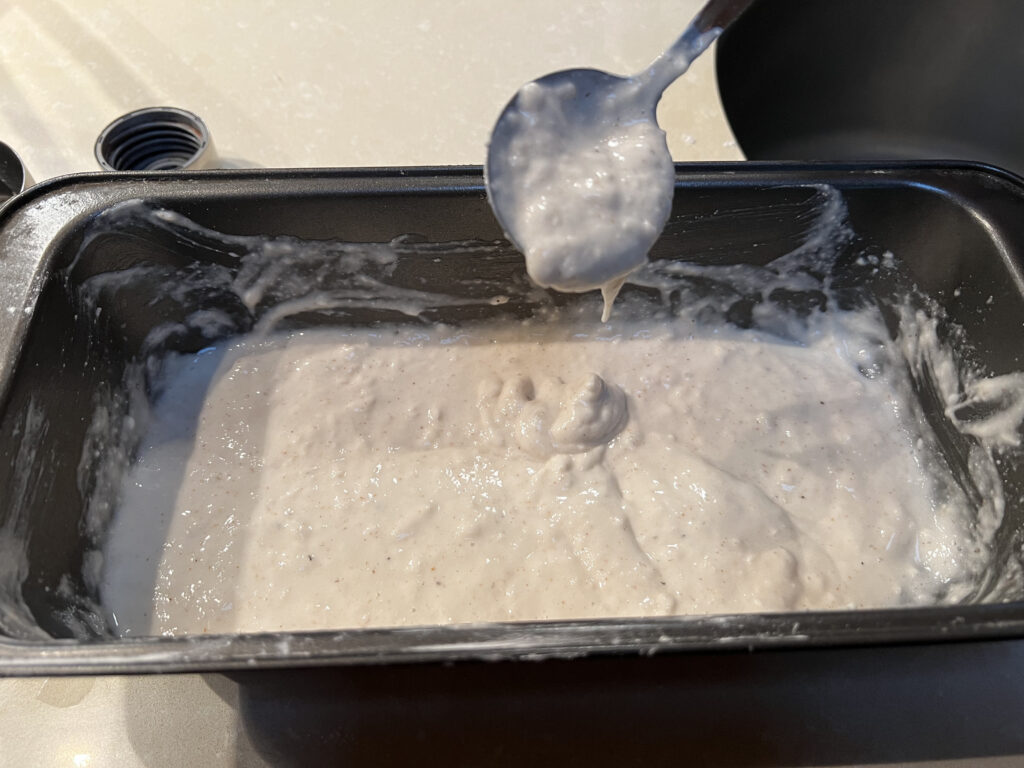
Coat the fish both sides in the batter. Then shallow fry in a roasting pan, be careful because it does spit with the hot oil, I use a glove when turning the fish and getting the fish in and out of the pan. Shallow frying is better as it soaks up less oil in the end and also as an added benefit allows you to add more batter to each side if parts were not coated properly.
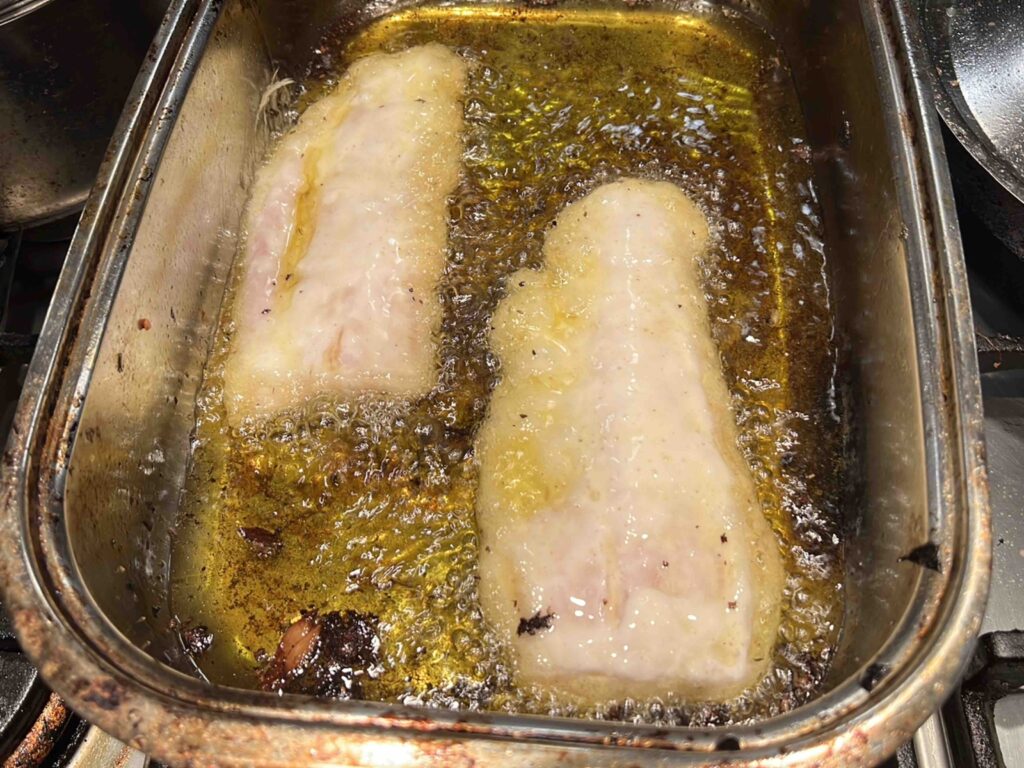
Or if you are like me and love this batter, just add extra blobs here and there to have more crunch at the final result.
This is what the batter looks like cooked.

What else can it be used for?
This recipe can also be used for potato cakes, onion rings, chicken pieces, vegetables, prawns and calamari.
Why do I use purple sweet potato?
I like to use purple sweet potato as it has a less sweet taste and is nightshade free if you are on the AIP diet.
Sweet Potato Cakes
Peel the potato’s then cut the sweet potato/potato into round circular discs and put on a plate.
For potato/sweet potato cakes I cut up them up into circular discs and put into a frying pan with a tiny bit of oil and a lid on low heat rather than the microwave as it seems to cook better. But you can use the microwave on high for 3-5 minutes to pre-cook if you are in a hurry.
Pre-cooking just makes it easier to fry them and they come up light and fluffy in the middle before the batter burns.
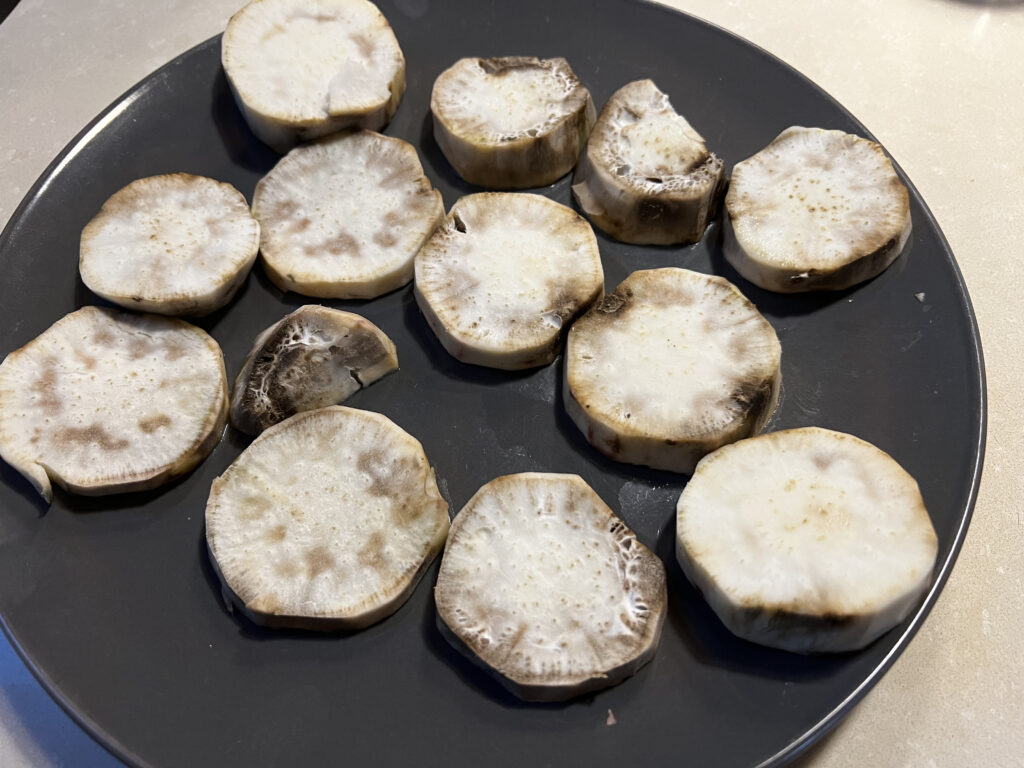
After lightly pre-cooking just coat them in tapioca flour.
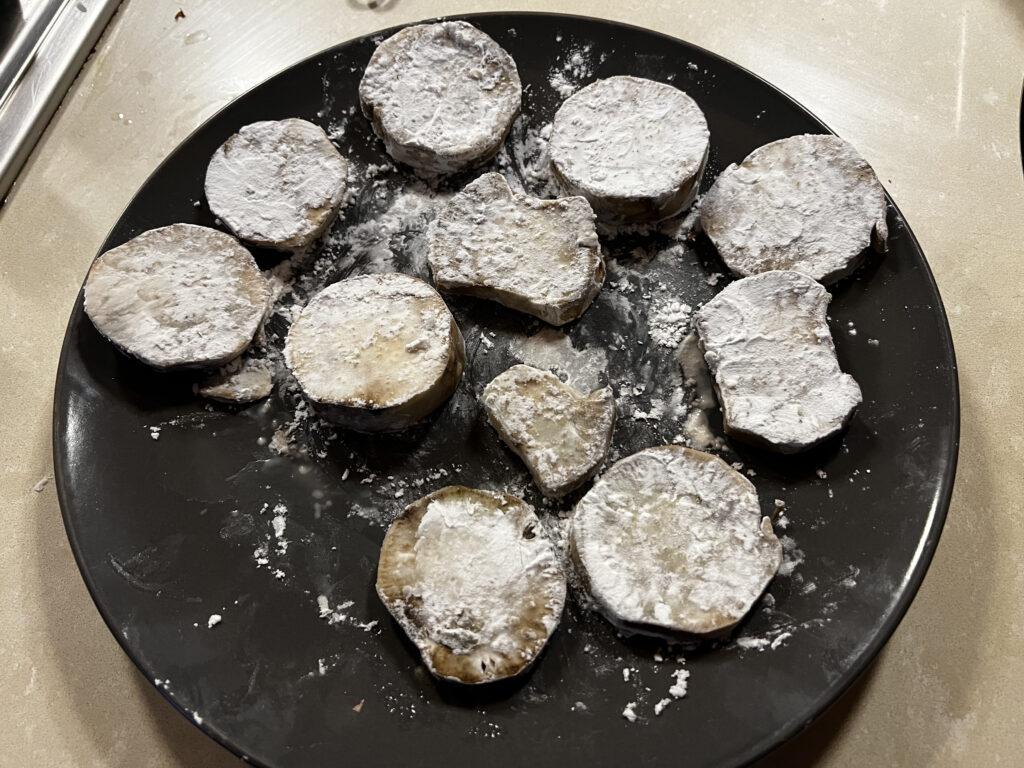
Now put the sweet potato into the batter.
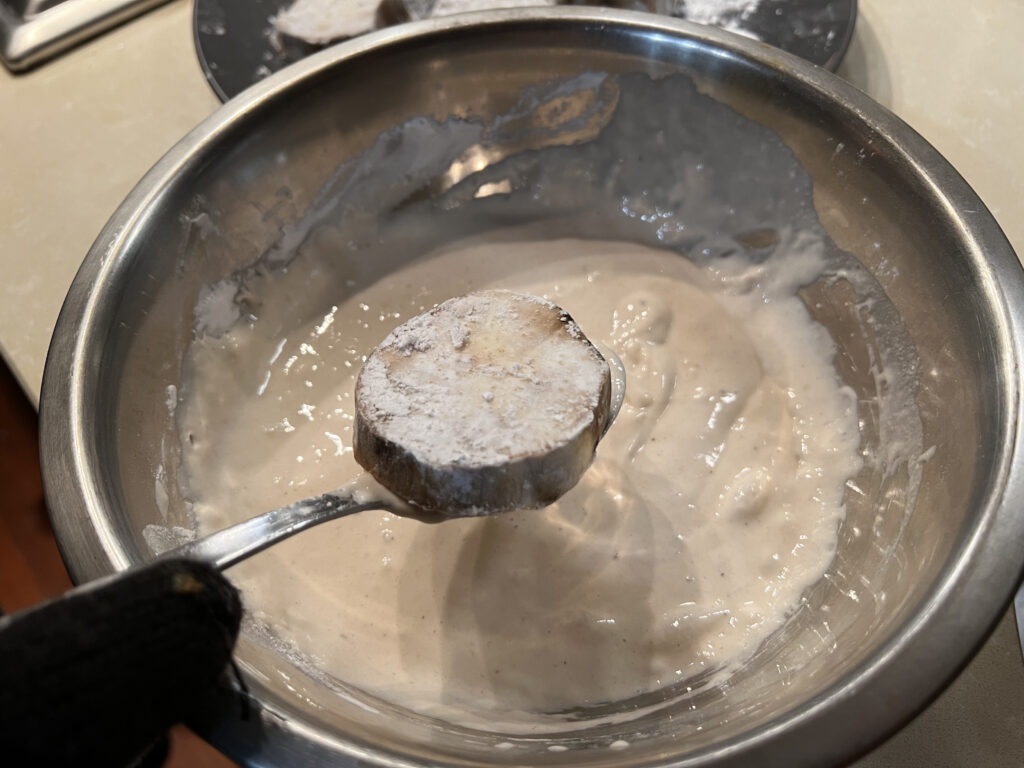
Use the spoon to flip over the sweet potato to coat the other side.
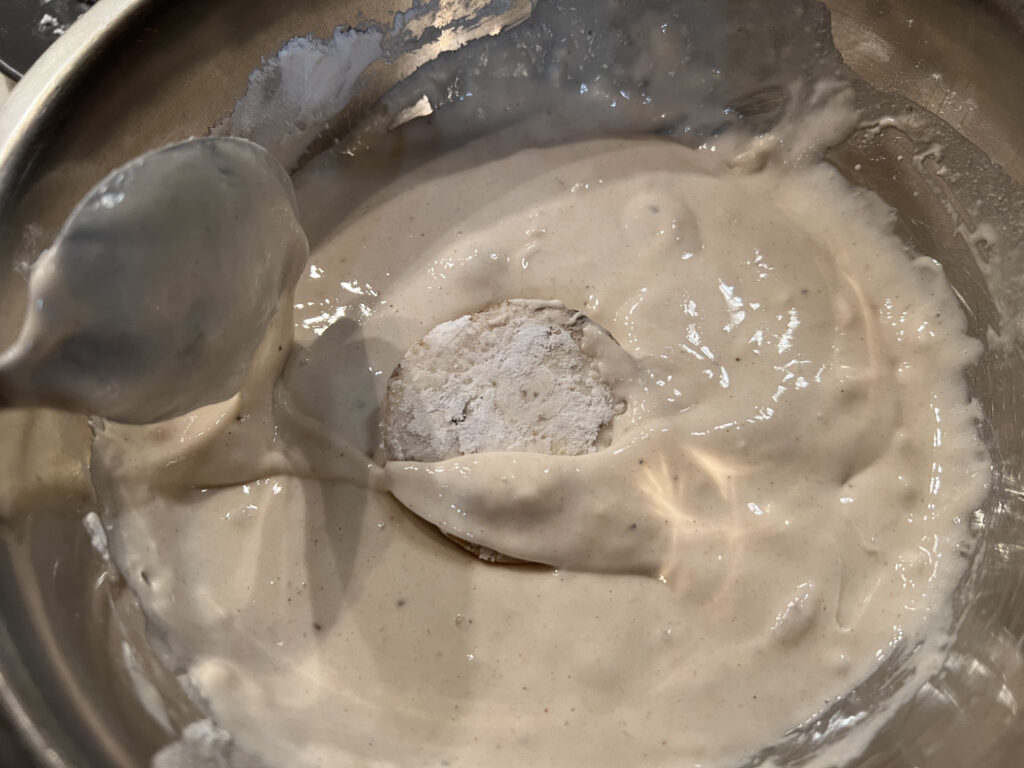
This is the sweet potato all coated in the batter.
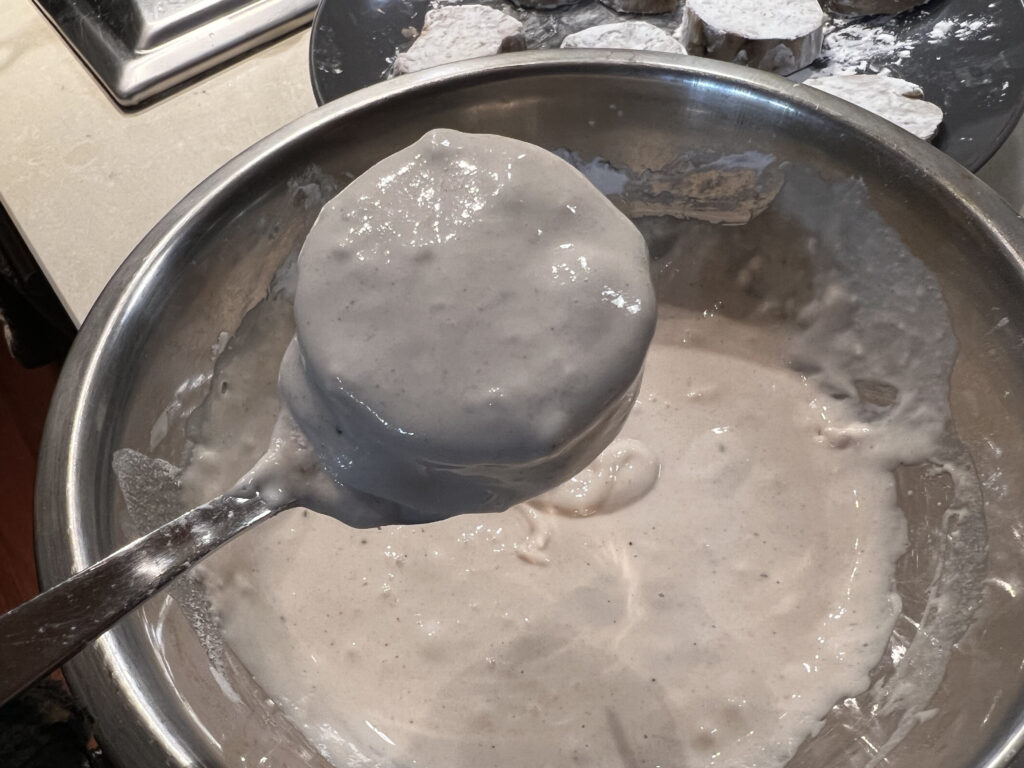
Sweet Potato Cakes cooking in the roasting pan on a high heat.
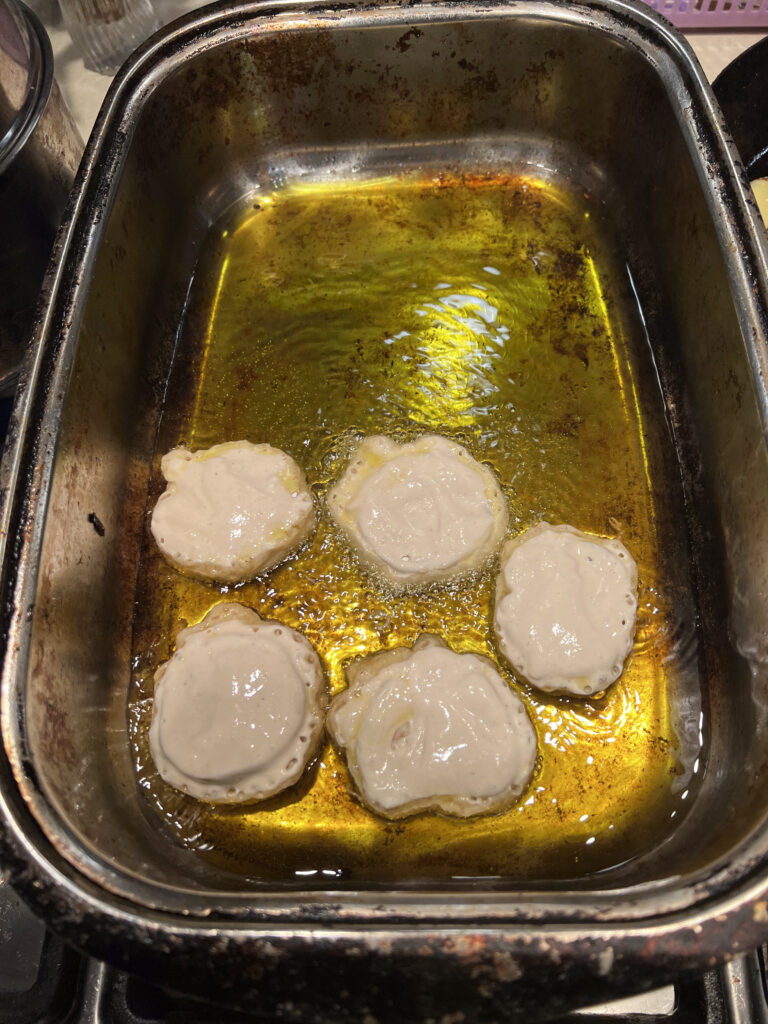
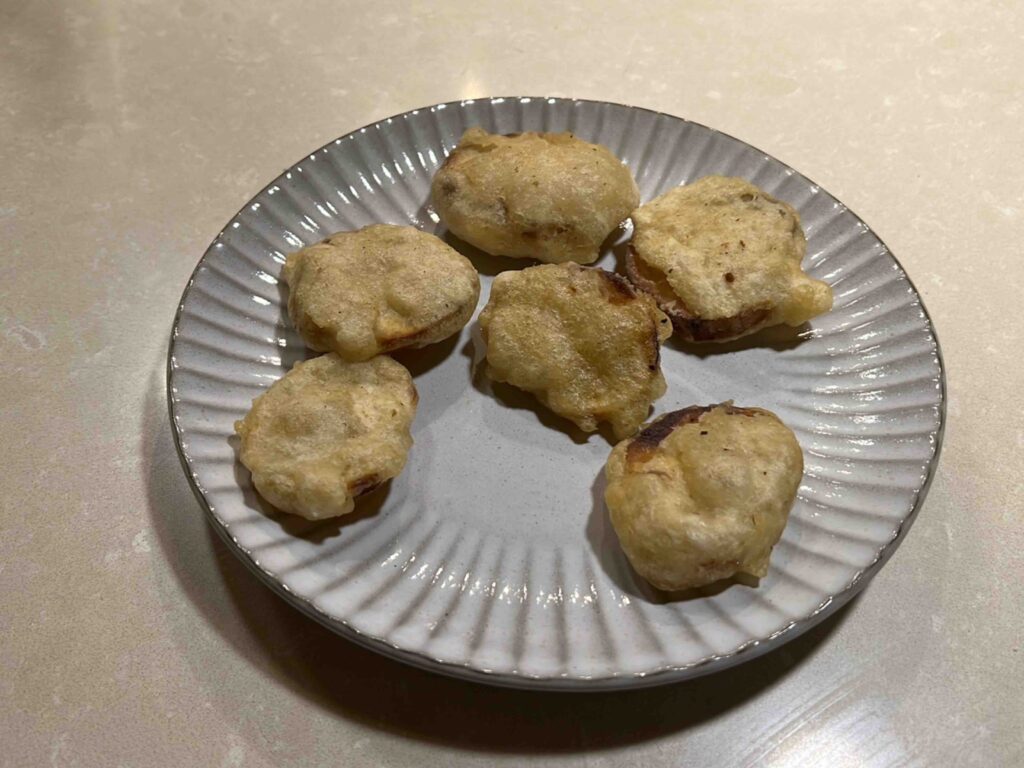
Onion Rings
Peel the onion and cut off both ends. Slice the onion as shown in the photo below, keep the width around 1cm or half an inch thick. Now just push out the inside of the onion discs to turn them into onion rings.
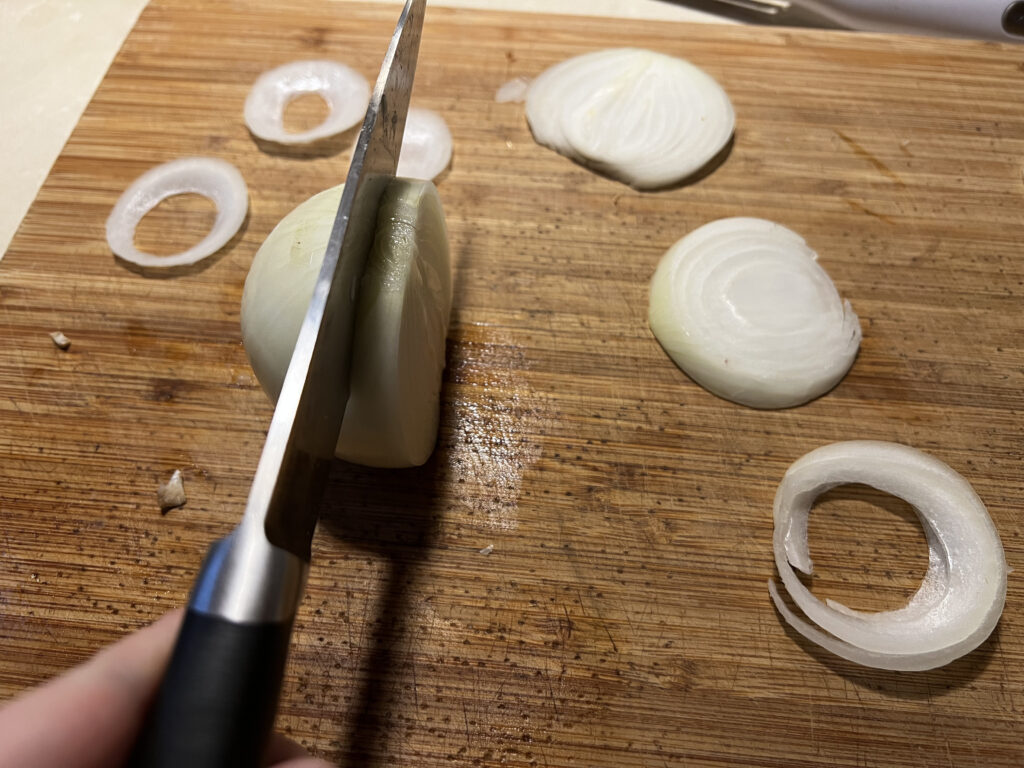
Now coat the onion in tapioca flour.
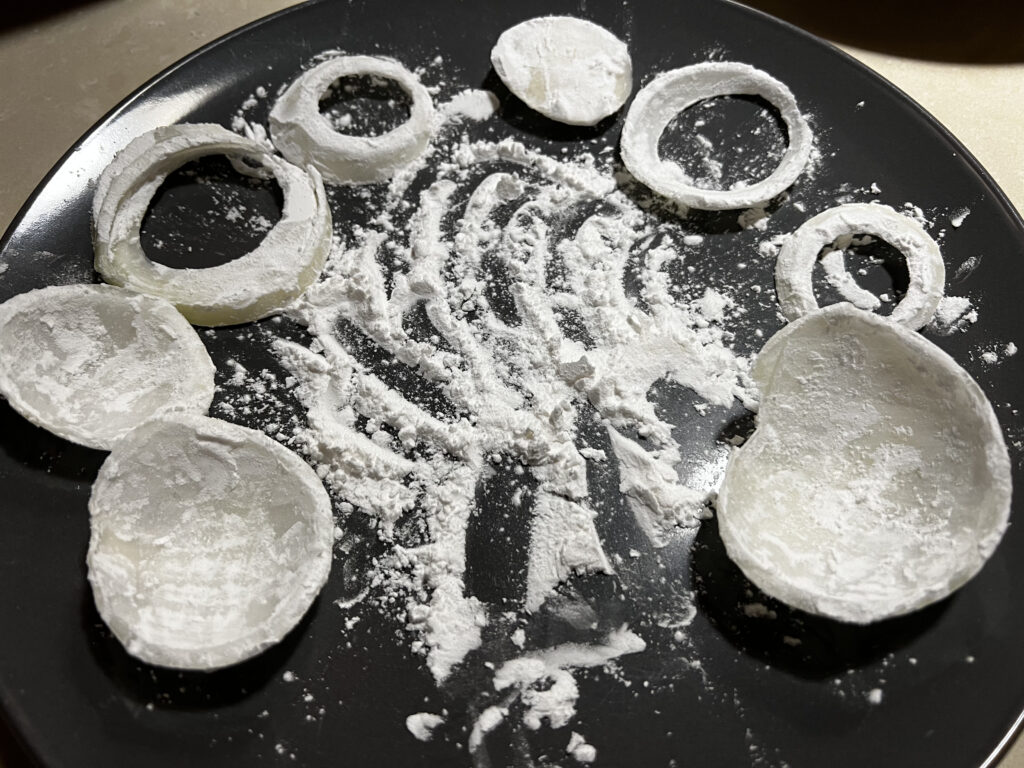
Now place the onion rings in the batter.
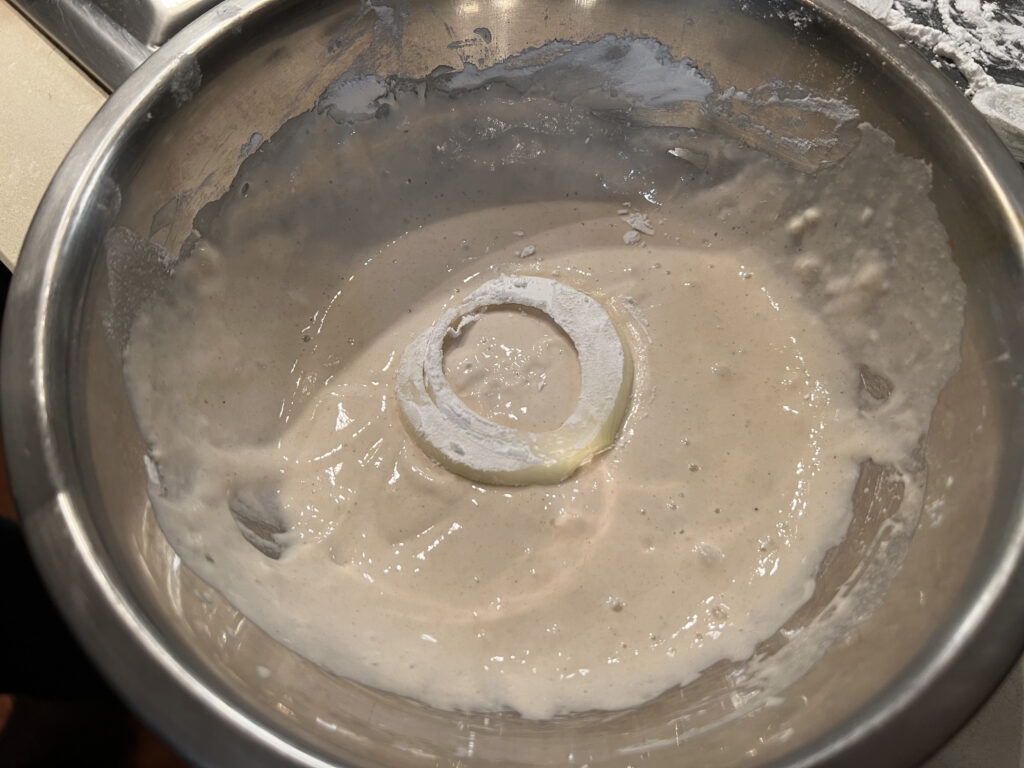
This is what the onion ring looks like when fully coated in the batter.
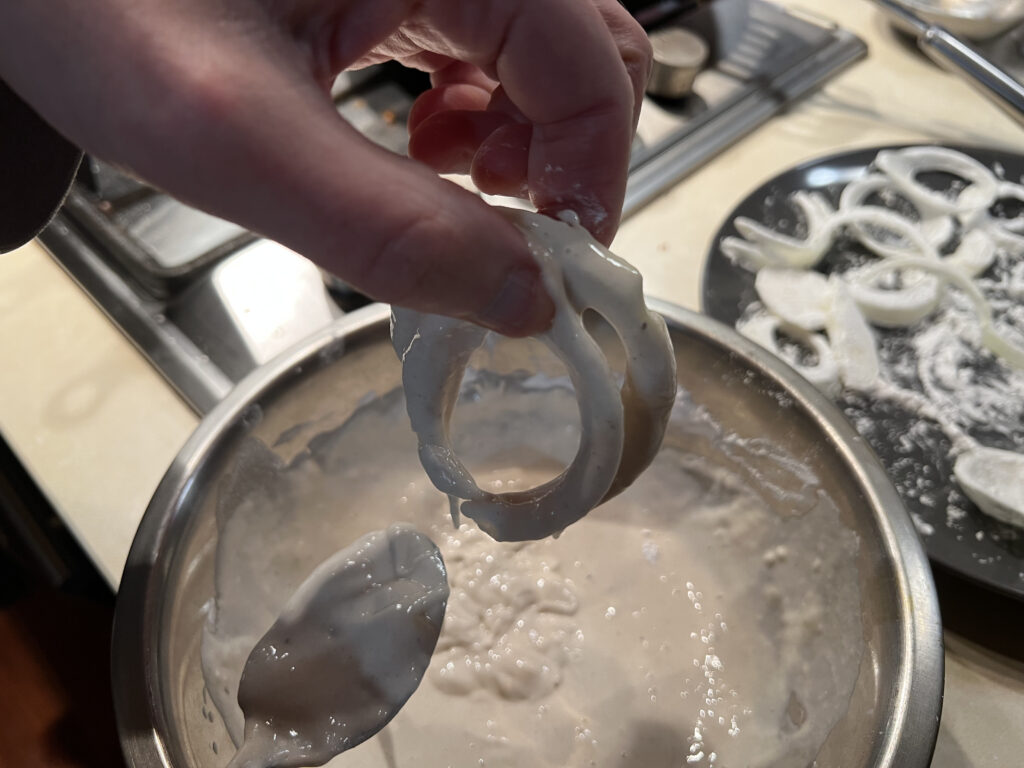
The photo below in the sweet potato and onion rings frying in the roasting pan.

This is what they look like when flipped over to cook the other side. They only take 2- 3minutes to cook because they were pre cooked at the start.
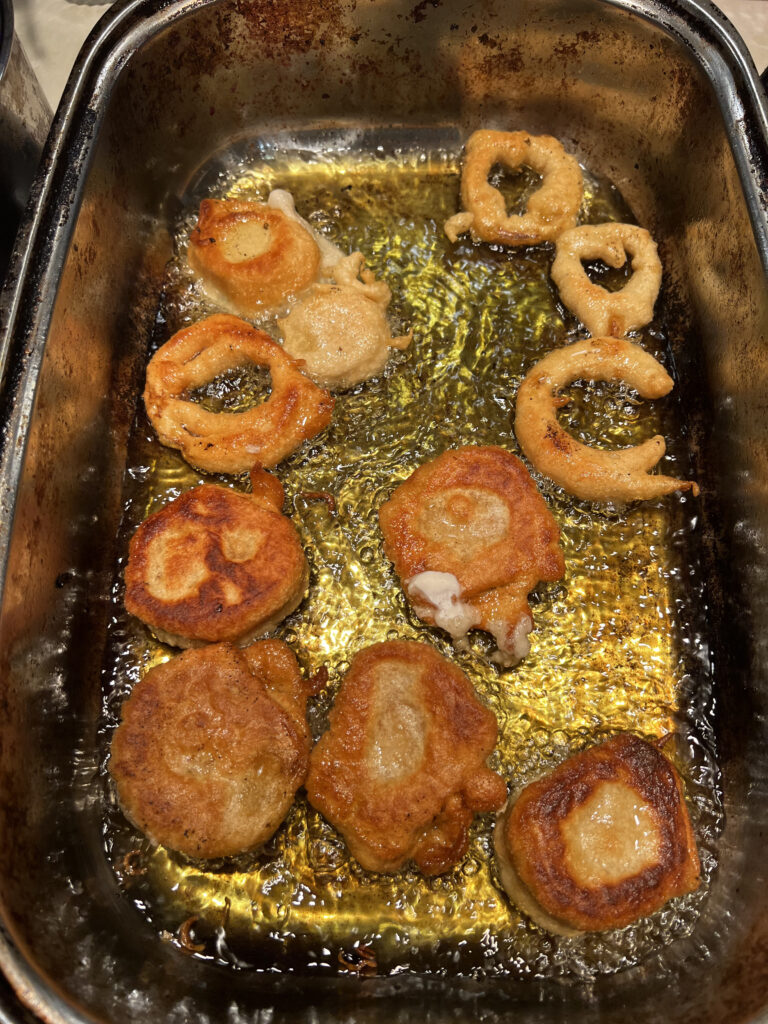
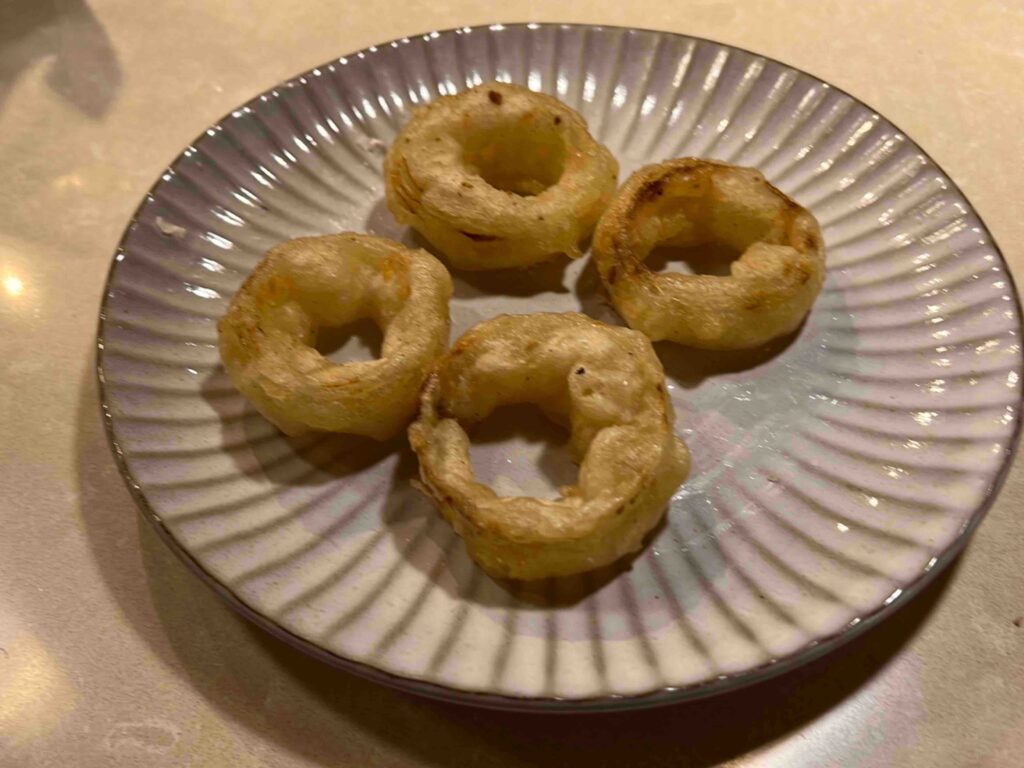
Tips:
I usually cook a big batch, then the next day when I want to reheat them, I use an Air Fryer as it keeps the batter nice and crispy when done and only takes 10 minutes.
First I place the fish and sweet potato’s in the air fryer for 5 minutes on one side at 200 degrees C. Then I flip the fish and potato cakes and cook for another 5 minutes at 200 degrees C.
If you like this recipe you will love my other recipes:
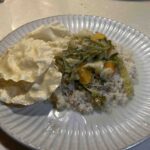
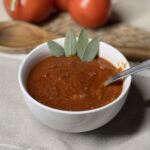

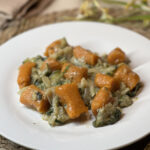


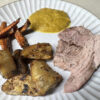
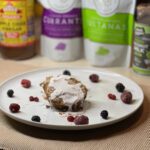
If you try this recipe let me know in the comments below the post.
FOLLOW ME on Facebook, Instagram, Pinterest and Twitter to see more delicious food and get all the latest updates.
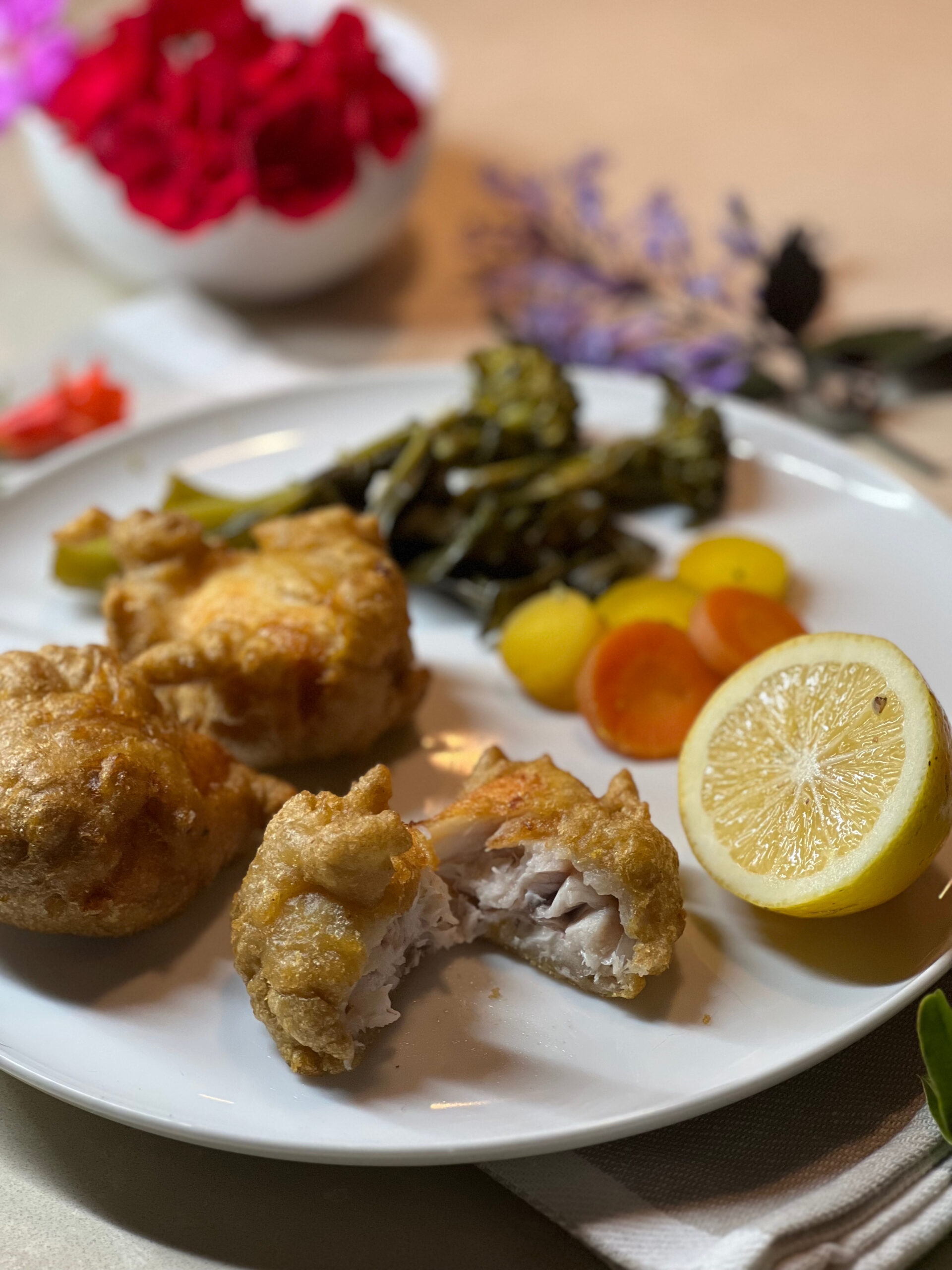
Equipment
Ingredients
- 1 tsp baking soda
- 1 tsp xanthan gum Leave out for AIP/Paleo
- ½ cup arrowroot flour
- ½ cup brown rice flour Swap for Cassava flour for AIP/Paleo
- ½ cup tapioca flour
- ¾ cup soda water or water
- ½ tsp salt
- ½ tsp pepper Leave out for AIP
- 1 tsp onion powder
- 1 tsp garlic powder
Instructions
- Add arrowroot and water together for the egg replacement
- Cut up your vegetables, potatoes, chicken or fish into the sizes you want. It's better if they come to room temperature before frying so just leave them out while you prepare the batter. Coat the fish or chicken and vegetables in cassava flour before adding the batter.
- Use a large roasting pan and put enough olive oil in the bottom to cover up to 1cm or half an inch. Place on a low heat for now.
- Put the arrowroot egg replacement and the rest of the flour into a large bowl.
- Add a little of the cold soda water to the dry ingredients and mix together with a fork very lightly.
- Keep adding the water slowly and mix gently until a batter forms.
- Put the fish in the batter and make sure both sides are covered.
- Then lower the fish into the oil using a spoon or a fork. Be careful when placing the fish into the oil as it will spit.
- Once you have placed a few items into the pan then turn up the heat. If there are a few spots on the top of any of the fish not covered with batter then spoon some more on those areas.
- Flip to the other side carefully, you might have to keep flipping a few times until you get a nice golden brown colour and the fish is cooked through, usually about 5 minutes.
- If the batter is cooking too quick then turn down the heat a little, or back to a low heat.
- Place a wire rack over another pan and place the cooked fish on top to catch the dripping oil so its not wasted.
 Lamb Roast with Gravy (AIP,Paleo,GF,DF)
Lamb Roast with Gravy (AIP,Paleo,GF,DF)
Good blog youu hage got here.. It’s hard to find excellent writing like
yours thnese days. I honestly appreciate people like you!
Take care!!
Feel free to surf to my blog … Silas